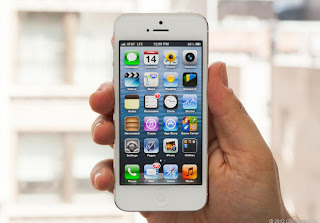Everybody loves a good story, so here goes...
Sometimes two events coincide that seem like distinct happenings, but over time, we become privy to the deep commonality that they share. Such was the case mid June last year when two news stories broke three days apart. The first was the auctioning of a functional 1976 Apple 1 motherboard for $374,500 on June 15. The second was Microsoft's announcement of their new Surface tablet on June 18.
By all estimations, Microsoft's event was well anticipated and received heavy media attention. This was still at a time before the disillusionment with Windows 8 set in. Everything was new... "millions of hours" were spent on the development of Windows 8 and Surface. But for all these very great efforts, public interest slowly waned.
If you haven't already guessed, the commonality between these two events was that the Apple 1 was the first computer that Apple made; and Microsoft's Surface was the first for them some 35 plus years later.
Surfacing Ideas
We'd like to quote from Microsoft's shining moment on that day in June. Not to ridicule or make fun... simply to see what went wrong.
"This is the new Microsoft Surface [tablet]. It embodies the notion of hardware and software really pushing each other. People do want to create and consume, they want to work and they want to play, they want to be on their couch, they want to be at their desk and they want to be on the go. Surface fulfills that dream. It is a tool to surface our passion, to surface your ideas, to surface your creativity and to surface your enjoyment." - Steve Ballmer, CEO of Microsoft at the Surface Announcement Event (June 18, 2012)
As we titled this section, Surface was intended to "surface" or provide a physical casing for the ideas, dreams and ambitions of its users. While Microsoft has had the Xbox for years, there is a world of difference between a gaming counsel and a personal computer or tablet. While the former is about entertainment, the latter is about productivity and furthering real-world creative expression.
A Computer in Every Home
Why would someone pay $374,500 for a 1976 Apple 1 motherboard? It's because that's when Steve Jobs first manifested his idea behind personal computing; to enable every household to have one of these things. This is why someone was willing to pay $347,500 for this still functional motherboard. The dream of free and open creative expression is still very much alive. The Apple 1 that they purchased is a testament to continued excitement behind Job's original idea.
What then is the difference between 1976 and 2012? While Steve Jobs saw a vision of a connected world with creativity and expression in every home, Steve Ballmer is speaking already to a public firmly entrenched in this world. In order to convince the public of today, he needed to add something to the equation. If Microsoft isn't cool, it's because their new software and hardware offerings weren't seen as game changers.
Steve Jobs or Bill Gates in 50 Years
It was recently asked, who will be remembered in 50 years: Steve Jobs or Bill Gates? The answer that was given by a well-known author was that it would be Bill Gates. The reason behind this answer was very surprising: It's because of his philanthropy.
While we don't presume to downplay the great charitable acts that Bill Gates and his foundation have done, these activities are a result of Microsoft's success, but not the furtherance of some Microsoft-based vision for the world. As this author said "I firmly believe that 50 years from now he will be remembered for his charitable work. No one will even remember what Microsoft is." These are probably not the words present-day Microsoft employees wanted to here.
We all know that Steve Jobs, for all his years as CEO, remained a product manager at heart. As Glenn Reid wrote recently about working with Jobs, "Steve... was a product designer at his core, who was smart enough to know that the best way to design products was to [be] CEO... He was compelling and powerful and all that, but I think that having once had the reins of power wrestled away from him, he realized that it was important not to let that happen again, lest he not be allowed to be a Product Manager anymore."
It's questionable whether any "cool" company can have a CEO that actually acts like one. For Apple, Steve Jobs was a product manager and a de-facto CEO... in order that he could stay put a product manager.
This is a lesson that any CEO can learn from.
iEssential
The introduction of creativity into the physical is like lighting up a pile of stones. In order to course electricity through inanimate objects, we need to first awaken ourselves to the concepts behind these products. Products are manifestations, revelations, of some deeper truth. In order to light up a store of city full of tablets and other devices, we need to first bring down the essence of God.
This sentiment is expressed well in Apple's line of "i" products (Pod, Pad, etc... ). In order to bring down truly novel ideas, they indeed need to come from my essence which is a veritable part of God. But products are just revelations. Paradoxically, while busying ourselves with revelations is a waste of time, it is only by means of these revelations that we bring light to this world. Although we may be physically wealthy, our focus always ascends back to the essence of Godliness above. This mindset itself is a segulah for becoming even more wealthy in the future.
If Microsoft or Apple finished a press conference with a complete sense of satisfaction, then the public would be disappointed. By learning to scorn revelations, we prevent the fall from being seduced or satiated by them. We fully expect Microsoft, Apple, and other leading innovators, to be well underway on their next offerings by the time they release their present versions. Scorning keeps developers focused on growth. But before we move to something new, we must first see how this new model improves upon the original idea.
We read the news. See something interesting. Then move on to the next story. Wait a minute. There's something missing with this. We help you get back to Point A. What drew millions to these stories to begin with, and how can companies continuously draw people back? In other words: How do you stay exciting? There's a reason why people like one thing over another. It comes down to concept. While the product may change many times, if people connect with the concept, then no matter what version or upgrade or service level you release-people will come back.
What does it mean to connect (Facebook), follow (Twitter) or link (LinkedIn) with someone? Why do so many people like smart phones and tablets? Bottled water companies don't own the trademark on "pure" and smart phone makers don't own the trademark on "communication." But by staying true to the idea, they can show that they are vested in the pursuit of knowledge. The continual development and progression of ideas.
For your brand or product strategy analysis, you can contact me directly at ysgordon [at] gmail [dot] com





0 comments: